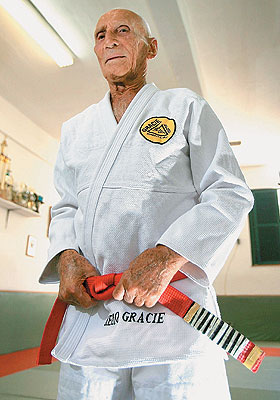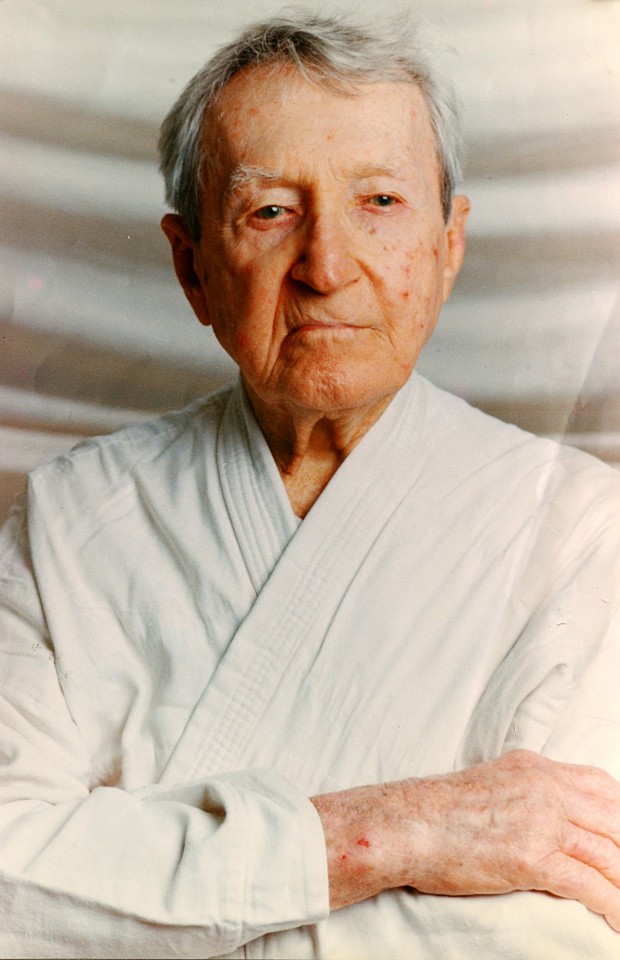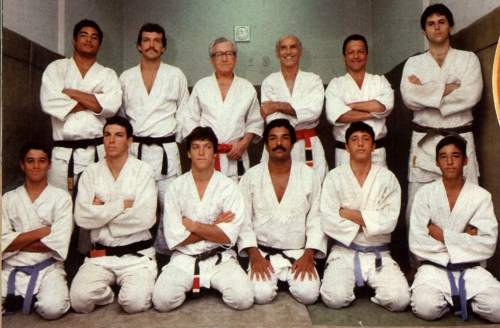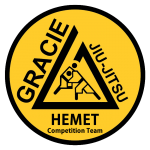Call Us Today! (951) 603-4202 | info@mygraciehemet.com

Our History
Jiu-Jitsu, unlike other martial arts, did not evolve from one source, tradition, or root; instead it has multiple roots and travelled through many Asian countries before its final development in Japan. The Buddhist Monks (India) who first began to develop Jiu-Jitsu were men of great wisdom who possessed a perfect knowledge of the human body.

FROM BUDDHIST MONKS TO SAMURAIS
Jiu-Jitsu, unlike other martial arts, did not evolve from one source, tradition, or root; instead it has multiple roots and travelled through many Asian countries before its final development in Japan. The Buddhist Monks (India) who first began to develop Jiu-Jitsu were men of great wisdom who possessed a perfect knowledge of the human body. Consequently, they applied laws of physics such as leverage, momentum, balance, center of gravity, friction, weight transmission and manipulation of the human anatomy’s vital points in order to create a scientific art of combat.
From India to China and then to Japan: The period of Japanese history between the 8th and 16th centuries was covered with constant civil war and many systems of Jiu-Jitsu (that time also known as Yawara, Hakuda, Kogusoko, and an assortment of other names) were utilized, practiced and perfected on the battlefield. This training was used to conquer armoured and armed opponents. Many close fighting techniques were created and mastered during this era.
In approximately 1603, Japan came to a fairly peaceful period. During this time (1603-1868), the feudal civil wars that had plagued Japan for centuries started to disappear. However, following the adage “living in peace, but remembering war,” the practice of Jiu-jitsu continued to spread. Forms and techniques displaying weapons skills of fighting began to yield to weaponless styles which incorporated many of the grappling ground fighting techniques of the older styles.
The Various Theories
When the days of the Samurai came to an end, the gun replaced the sword, and new sportive ways to practice martial arts were developed. Eventually, in Japan many different variations of Jiu-Jitsu took shape, including Karate, Aikido, and Judo. But these arts were missing essential pieces of what the complete art of Jiu-Jitsu originally held.
Like many other subjects of history, it would be impossible to accurately describe the origin of Jiu-Jitsu. However there is no lack of hypotheses. Every culture has shown to have some form of hand-to-hand combat in its history. Weaponless combat usually appears in the form of wrestling and sometimes boxing. Looking at a fighting timeline, it is possible that the wrestling techniques of Jiu-Jitsu could have been influenced by Ancient Greece.

The Olympic Games were one of the Greek’s traditions. In fact one of its most popular sports, Pankration was a sport that involved both boxing and wrestling techniques and became more popular to the Greeks than each one of them individually. During Alexander the Great’s conquests (356 – 323 B.C.), he brought the Greek culture to the areas he conquered. His conquests stretched all the way to India, where he introduced the customs and ideals of Greek culture to the people of that area where Jiu-Jitsu’s foundation was likely to have been born.
The general idea embraced by most historians is that systemized martial arts techniques came from India along with Buddhism (Dharma). The concept here is that the Shaolin temple was built in the center of China and this is where Dharma introduced Buddhism and Boxing. Buddhist Monks in northern India are said to have greatly contributed to the early development of Jiu-Jitsu. Bandits constantly assaulted the monks during their long journeys through the interior of India. Buddhist religious and moral values did not encourage the use of weapons so they were forced to develop an empty hand system of self-defense.
The traditions of classical budo (martial arts) required that everyone should learn a method of self-defense for those situations where weapons could not be used. Universally, these techniques were known as Jujutsu.
It has been estimated that there were about 725 recorded systems of jujutsu in vogue during its golden age from 1680 to 1850.
Another version supports the idea of Jiu-Jitsu coming from China around the time of the fall of the Ming Dynasty. When a Chinese monk named Chin Gen Pinh came to Japan, accompanied with his knowledge and experience of Kempo, known as the “China Hand.” Another theory says that there were practitioners of Chikura Karube, a wrestling sport developed around 200 B.C. It is said that Chikura Karube later became Jiu-jitsu in Japan.
One thing is certain about these stories, and that is that the Japanese were responsible for refining a grappling art into a very sophisticated grappling system called Jiu-Jitsu which was developed in Japan during the Feudal period.
JUDO X JIU-JITSU
After the Feudal period in Japan ended (Jiu-Jitsu was no longer needed on the battlefield), a way to practice the art realistically was needed, which is why Jigoro Kano (1860-1938), an educated man and member of the Cultural department and a practitioner of Jiu-Jitsu, developed his own version of Jiu-Jitsu in the late 1800s, called Judo. Judo was helpful because it allowed practitioners the ability to try the art safely and realistically at the same time.
After a match-up between older styles of Jiu-Jitsu and Judo at the Tokyo police headquarters, Judo was named the national martial art in Japan. It was the official art used by law enforcement in the late 1800s, and continues to be popular nowadays.
Because of the sportive outlet (rules that made practice safe), students of Jiu-Jitsu from Kano’s school were able to practice more frequently due to the fact that they were not always recovering from injuries. This multiplies the amount of training time for students of Kano’s school and drastically increased their abilities. Judo (Kano’s version of Jiu-Jitsu) was watered down from the complete form of Jiu-Jitsu, but still contained enough techniques to preserve its realistic effectiveness. He named it Kodokan Judo. The one problem that occurred was, in Kano’s opinion, ground work was not as important as achieving the throw or take down, therefore ground fighting was not emphasized in Judo.
There is other theory that claims that Judo was developed with the purpose of hiding the realistic effectiveness of Jiu-Jitsu from the western world. During World War II, many U.S. soldiers were exposed to the art of Judo and brought it back to America with them.
THE BIRTH OF BRAZILIAN JIU-JITSU
Jiu Jitsu first came to Brazil with a Japan’s champion Judoka and Jiu-Jitsu fighter Mitsuyo Maeda, as many Japanese people were immigrating to Brazil at that time. A Brazilian diplomat named Gastão Gracie helped the colony with land and cattle and also helped Koma secure citizenship in Brazil. In return for this help Koma went against the Japanese tradition and volunteered to teach real and effective Jiu-Jitsu to a non-Japanese, Carlos Gracie (Gastão’s oldest son). Carlos quickly fell in love with the techniques and philosophy of Jiu-Jitsu, he became an avid student for a few years and eventually moved to the Southeast of Brazil where he taught his brothers and established the first Gracie Academy in 1925. Even without any formal education, Carlos diligently studied, in addition to jiu-jitsu, many different subjects including nutrition, spirituality, exercise and natural hygiene. A philosopher in nature, Carlos was the “thinker of the clan” as a famous journalist of the time would call him, and would always provide invaluable advice to his brothers on all areas of life.

HELIO GRACIE REINVENTS JIU-JITSU
Gracie Jiu-jitsu also known as Brazilian Jiu-Jitsu was developed due to the wisdom of Carlos and the genius of his youngest brother Helio Gracie. The combination of Carlos research formed the foundation that Helio used to develop a new style of Jiu-Jitsu.
Helio, was a very physically frail child. He would run up a flight of stairs and have fainting spells. No one could figure out the cause of his condition. Following doctor’s recommendations, he would spend his entire life limited to only watching his brothers teach. Carlos was very concerned about his younger brother’s health and did no allow him to practice.
One day, when Helio was 16 years old, his brother Carlos was running late for a private lesson with Mario Brandt, a director of Brazil’s largest banking institution. So Helio, who was a great observer and had memorized the basic lessons from watching his brothers teach, offered to start the class. When the class was over, Carlos showed up and apologized for his delay. The student answered, “No problem. I enjoyed training with Helio very much and, if you don’t mind, I would love to continue learning from him.” Carlos agreed, and Hélio became an instructor. Carlos could not have imagined the colossal impact that his little brother would have in the martial art’s world.
As he started teaching and training, Helio realized that due to his frail physique, many of the Japanese techniques that he had learned were difficult for him to execute. Eager to make the techniques work for him, he began modifying them to accommodate his weak body. Emphasizing the use of leverage and timing over strength and speed, Helio adapted the Jiu-jitsu learned from Konde Coma and through trial and error developed what is now referred to as Gracie/Brazilian Jiu-Jitsu. This adaptation process continued for the remainder of Helio’s life. Many Gracie family members and other practitioners contributed to the development of Jiu-Jitsu. But none of these efforts can be compared to Helio Gracie’s role. His eighty years of uninterrupted dedication to the enhancement of jiu-jitsu, his work as a teacher to thousands of students, the notoriety and difficulty of his fights, his strict adherence to the Gracie Diet, the teaching method that he developed, and the creation of a never-seen-before defensive strategy are unparalleled in the history of the art and position him as the originator of a new style.

In order to prove the effectiveness of Brazilian Jiu-Jitsu, the original Gracie brothers openly challenged all the tough guys and reputable martial artists in Brazil. These challenge fights were usually against much bigger and stronger opponents in order to prove that it was possible for a small person to defend against any attacker. Using these fights as scientific experiments, Helio developed a complete fighting strategy specifically designed to work against stronger and heavier opponents. Later he would also develop an innovative teaching method, which allowed for any person, even those not athletically gifted, to learn jiu-jitsu.
At the age of 17, Helio stepped into the ring for the first time in Rio de Janeiro against a professional boxer named Antonio Portugal. The Brazilian Jiu-Jitsu founder won this match by arm lock in approximately 30 seconds. That was the first of many victories that Helio would have against opponents from around the world. Under the tutelage of his brother Carlos, the youngest Gracie brother went on to become a national hero in Brazil. Some of his astonishing feats include the one hour and forty minute brawl against German American wrestler Fred Ebert, who weighed 200 pounds, also had defeated american wrestler Ed “Strangler” Lewis two times, and the epic battle against World Wrestling Champion Wladek Zybsko, who weighed 280 pounds. In 1937 Helio also defeated Estonian heavyweight boxer Erwin Klausner who had fought Primo Carnera for the world heavyweight championship two years earlier. Taro Miyaki, a world-renowned Japanese wrestler and Judoka, and Masagoichi, a Japanese Sumo wrestler and Judo black belt also fell prey to Helio’s amazing fighting technique in the 1930s.
In 1938 Helio Gracie decided to retire from the world of professional fighting for not agreeing with the emphasis that promoters were placing on entertainment rather than realism. He refused to accept fights that were decided on subjective criteria such as points or judges decisions. Staying true to his original principles, he insisted that fights should only be decided by submission or loss of consciousness. Even though he exited the professional fighting scene, Helio always made himself available to fight, in private, against anyone who doubted the effectiveness of his art. For the next 13 years he would dedicate himself to the development of a unique teaching method teaching an average of 30 private classes a day.
In 1951 Helio made an amazing come back when a Japanese delegation of Judo masters arrived in Brazil. This delegation included Heavyweight world champion Masahiko Kimura, At 39 years old, he had one of his most brilliant performances against Yukio Kato, a fifth degree Judo black belt from Kodokan. This match was held at the Ibirapuera Arena in São Paulo. Hélio defeated Kato with a chokehold from the guard position. His victory brought glory to Brazil and international recognition to his style of Jiu-Jitsu. Upon defeating Kato, a challenge match was set between Helio and the world open weight champion, Masahiko Kimura, probably the best fighter that Japan has ever produced. This historical match took place in 1951 and was held at Maracanã Stadium, which at the time sat 200,000 people. Helio was 39 years old and weighed 135 pounds while Kimura was 34 years old and weighed 215 pounds. Kimura boldly stated that if Helio could last more than 3 minutes, he should consider himself the winner. Helio fought Kimura for 15 minutes before being caught in a shoulder lock. Even though Helio never surrendered, his brother and corner man Carlos decided to step in and interrupt the fight. Tremendously impressed with Hélio’s technique, the Japanese masters invited Helio to come to Japan and teach. It was a major recognition of Helio’s lifetime dedication to the refinement of the art.
At 43 years of age, Helio and former student, Waldemar Santana, set the world record for the longest uninterrupted no-holds-barred fight in history when they fought for an incredible 3 hours and 40 minutes!
Helio also challenged heavyweight boxing world champions Primo Carnera, Ezzard Charles, and Joe Louis to matches to compare styles. They all declined. Throughout his career, he defeated fighters from several different styles in order to prove that a small person can neutralize superior strength and athleticism through the knowledge of Jiu-Jitsu.
However, his most heroic act was carried out outside of the ring. When traveling southbound towards Rio de Janeiro onboard a big cruise ship called Itanajé, Helio Gracie and his brother Carlos couldn’t see shore. As they enjoyed the sight of the big waves crashing against the side of the ship, they sensed a storm approaching on that gloomy afternoon in mid November 1946. Suddenly, the screams of “Man overboard!” brought panic throughout the ship. A passenger had jumped overboard in an attempt to commit suicide. A boat with five sailors was immediately put into the water to rescue the drowning man. The big waves made it difficult for the sailors to reach the man who was approximately 700 feet away. When the boat finally reached him, they tried pulling the drowning man onboard. Again the big waves would get in their way by lifting the boat up and bringing the man down, preventing the rescue from happening. After trying to save the man for 20 dramatic minutes, the captain ordered them back, giving up on the rescue. The man was left to die. Watching all of this from the ship, Helio asked his brother “Why they didn’t jump in the water and pull him into the boat.” From behind a sailor warned: “This is Abrolhos.” Without getting an explanation and without realizing that what he meant was that the Abrolhos area holds the highest concentration of sharks in the Atlantic Ocean, Helio asked his brother if he didn’t feel like saving the man. Carlos replied, “Yes, but I don’t think I can get there”. Without hesitation Helio said, “I think I can” and immediately stripped to his shorts. As he swam towards the man, he ordered the sailors in the rescue boat to turn around. From the water Helio was able to get a good enough grip on the dying man, and with the help of the sailors, he put him into the boat, saving the man’s life. Besides the big celebration on the ship, he was awarded a Medal of Honor for his act of bravery.
An example of courage and determination, Helio became an international hero. A dedicated family man who exemplified a healthy life-style, he was the epitome of bravery, discipline, willpower, and he was an inspiration to people everywhere. A modern-day legend, Helio Gracie gained international acclaim for his dedication to the dissemination and development of Brazilian Jiu-Jitsu recognized worldwide as the father of Gracie Jiu-Jitsu and passed away at peace with all this work on January 29th, 2009.
GRACIE DYNASTY
Rolker, Royce, Rorion, Helio, Relson, Rickson, Royler are all famous names from the Gracie clan’s legacy of fighters and martial artists that continued this practice.

ROYLER GRACIE
Royler Gracie (born December 6, 1965) has been training Jiu Jitsu since he was 3 years old. He learned from his father (Helio Gracie), with brothers and cousins practicing Brazilian jiu-jitsu. Also coordinated the Gracie Humaita Academy in Rio de Janeiro, Brazil for many years under the direction of his father Helio, but currently lives in San Diego, CA.
As the son of the Grandmaster, Helio Gracie and brother of Rorion, Relson, Rickson, Rolker, Royce, Rherika, Robin and Ricci, Royler has a 7 degree red / black strip in the pioneer style by his family, Brazilian jiu-jitsu.
Before his retirement, In addition to several fights of Vale Tudo, Royler competed spottily in the black belt division for more than 20 years. Four times World Jiu-Jitsu Champion in the Featherweight category (up to 67kg), three times ADCC Champion (the largest non-kimono sports championship in the world), Pan American Champion and several times Brazilian Nationals and State Champion.
